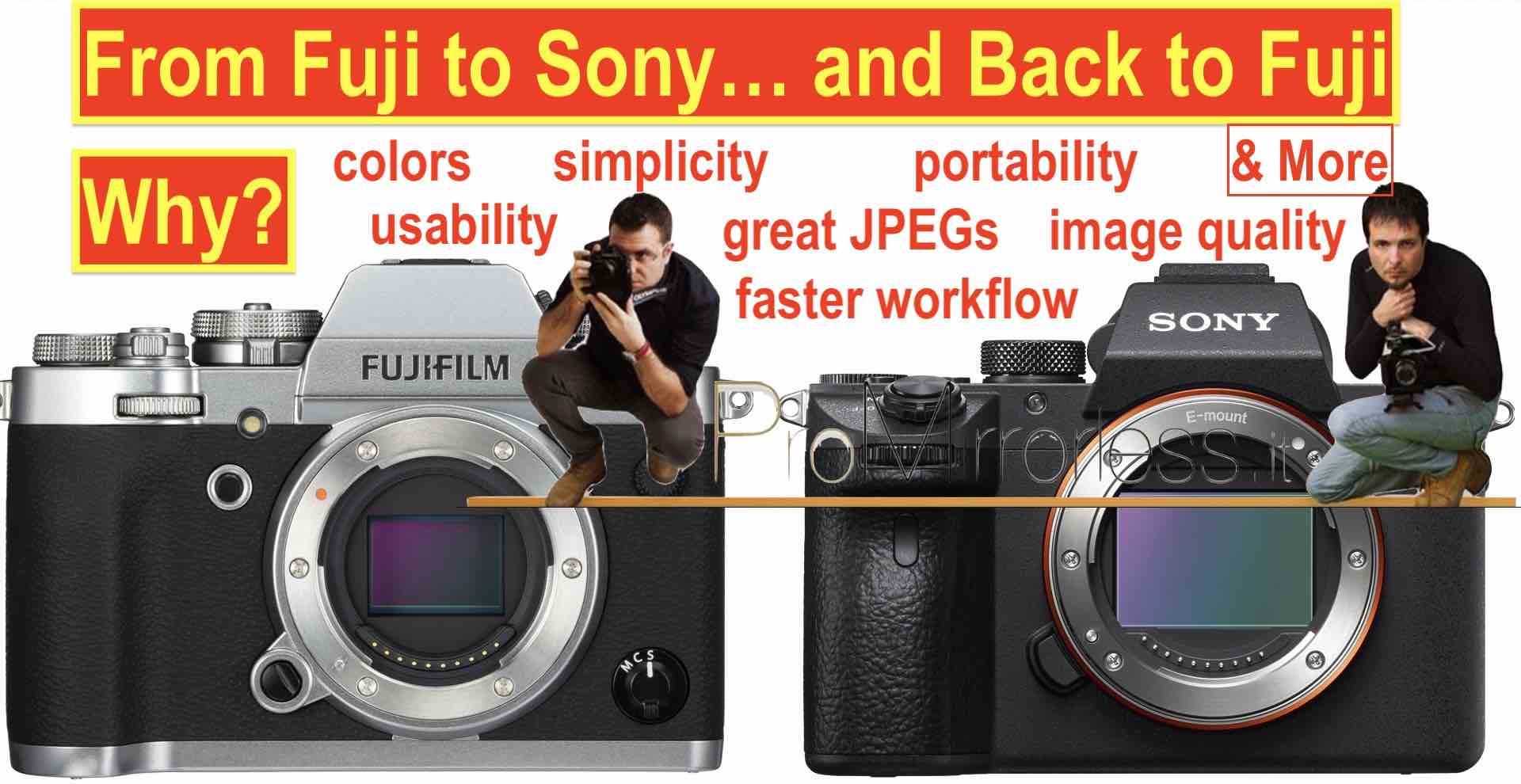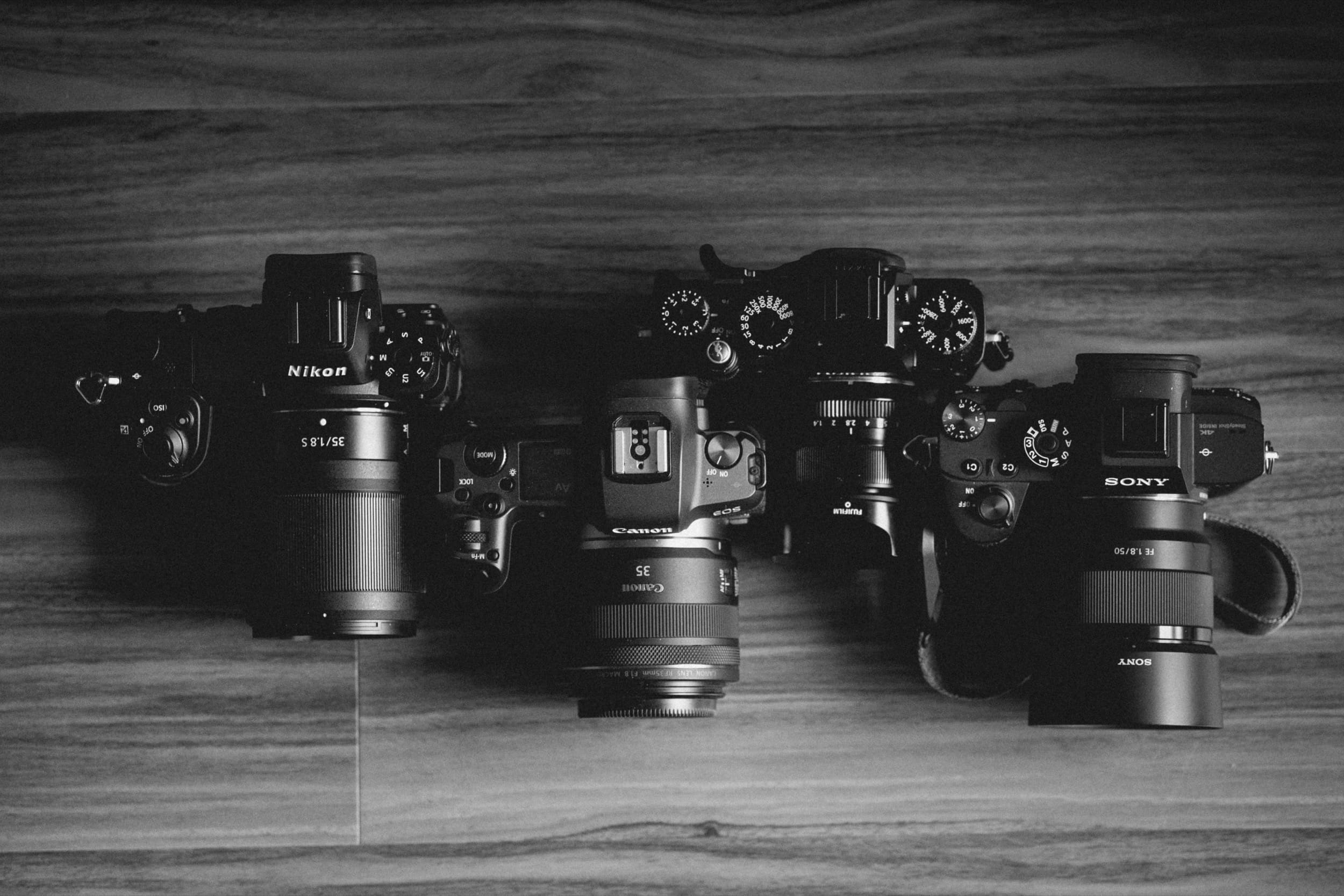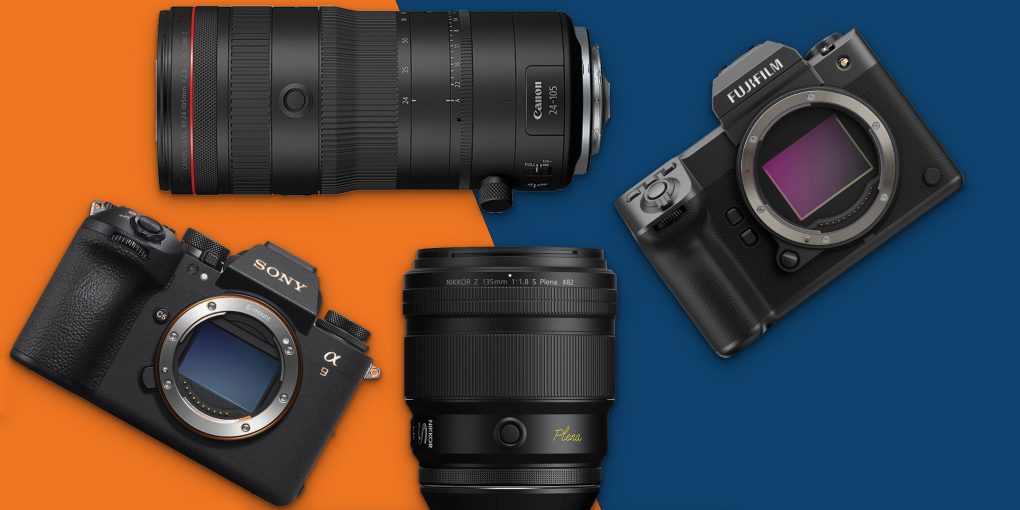Fuji Xt3 Vs Sony A7Iii: Ultimate Camera Showdown!
The Fuji XT3 stands out with its APS-C sensor and impressive video capabilities, while the Sony A7III shines with its full-frame sensor and superior autofocus. The Fujifilm X-T3 and Sony A7III cater to photographers and videographers seeking advanced features and robust performance.
Choosing the right camera depends on your specific needs and preferences. The Fujifilm X-T3, known for its color rendition and film simulation modes, is a favorite among those who appreciate its compact size and tactile controls. On the other hand, the Sony A7III offers a versatile full-frame experience with remarkable low light performance and dynamic range that appeals to professionals and enthusiasts alike.
Both cameras boast impressive build quality, offer 4K video recording, and include a range of connectivity options to facilitate seamless workflow. Balancing these strengths, your decision will likely hinge on whether you prioritize the larger sensor and autofocus prowess of the Sony or the distinct color science and smaller form factor of the Fuji.
Table of Contents
- Introduction To The Fuji Xt3 And Sony A7iii
- Prelude To The Photographic Duel
- Key Features At A Glance
- Design And Ergonomics
- Body And Build Assessment
- User Interface And Control Layout
- Image Quality And Performance
- Sensor Comparisons
- Low Light Capabilities
- Autofocus Efficiency
- Video Capabilities
- Cinematic Prowess
- Frame Rates And Resolutions
- In-body Stabilization Impact
- Lens Selection And System Expandability
- Native Lenses And Third-party Options
- Adaptability For Professional Use
- Battery Life And Portability
- Endurance For Extended Shoots
- Travel Friendliness
- Price Point And Value For Money
- Affordability Analysis
- Assessing Long-term Investment
- Final Verdict In The Showdown
- Pros And Cons Summary
- Recommended Choice For Photographers
- Frequently Asked Questions Of Fuji Xt3 Vs Sony A7iii
- Which Is Better For Video, Fuji Xt3 Or Sony A7iii?
- How Do Fuji Xt3 And Sony A7iii Compare In Autofocus?
- Can Fuji Xt3 Utilize Sony Lenses?
- Is Fuji Xt3 More Portable Than Sony A7iii?
- Conclusion
- CallofPhotography
Introduction To The Fuji Xt3 And Sony A7iii
Fuji XT3 and Sony A7III stir boundless excitement among photography enthusiasts. These two cameras blend innovation and performance. The XT3, from Fujifilm’s acclaimed X series, touts an APS-C sensor. Sony’s A7III, a full-frame powerhouse, is a gem in the Alpha line-up. Both cameras promise exceptional image quality, rapid autofocus, and impressive video capabilities. This face-off isn’t just about specifications—it’s a battle for the heart of photographers.
Prelude To The Photographic Duel
The clash between the Fuji XT3 and Sony A7III is a photographic spectacle. Each camera holds its ground with unique features. Understand their strengths to choose the right tool for your creative journey. Embrace the adventure that awaits behind each lens. Let’s gear up to delve into their world, comparing key elements side by side to unveil the champion for your photography needs.
Key Features At A Glance
| Feature | Fuji XT3 | Sony A7III |
|---|---|---|
| Sensor Type | APS-C | Full-Frame |
| Resolution | 26.1 MP | 24.2 MP |
| Autofocus Points | 425 | 693 |
| ISO Range | 160-12800 | 100-51200 |
| Video Capability | 4K at 60fps | 4K at 30fps |
| Viewfinder | Electronic | Electronic |
- Build Quality: Robust bodies, durable designs
- User Interface: Intuitive menus, custom buttons
- Portability: Compact vs. lightweight, travel friendly
- Lens Selection: Vast for both, with unique options
Design And Ergonomics
Design and Ergonomics play a crucial role in the user experience of any camera system. The debate between the Fuji Xt3 and Sony A7III often includes these aspects. Both cameras offer distinct feels and experiences. Let’s dive into the nuances of both models by examining their body and build, as well as their user interfaces and controls.
Body And Build Assessment
The Fuji Xt3 boasts a retro design with a sturdy magnesium alloy body. It feels robust in hand. The compact frame of the Xt3, reminiscent of classic film cameras, is a hit among enthusiasts.
In contrast, the Sony A7III finds its strength in a modern aesthetic. Its full-frame sensor is housed in a larger body than the Xt3. The build quality is solid, giving a sense of durability and reliability.
Comparing both side by side:
| Fuji Xt3 | Sony A7III | |
|---|---|---|
| Material | Magnesium Alloy | Magnesium Alloy |
| Design Style | Retro | Modern |
| Size | Compact | Larger Body |
User Interface And Control Layout
The Fuji Xt3 impresses with its dials and tactile controls. Users enjoy a sense of direct control over settings. The physical dials for shutter speed, ISO, and exposure compensation are user-friendly. The layout prioritizes easy access and efficient adjustments.
The Sony A7III, on the other hand, favors a menu-driven interface. The learning curve may be steeper for new users. However, it offers a customizable experience. Buttons and dials are programmable, suiting different shooting styles.
- Fuji Xt3: Tactile dials, user-friendly, efficient layout
- Sony A7III: Customizable controls, menu-driven, adaptable
Image Quality And Performance
Exploring the realms of photography, the Fuji XT3 and Sony A7III stand out as impressive choices. Each with unique strengths, these cameras promise exceptional image quality and performance. For enthusiasts and professionals alike, delving into their capabilities reveals where each model shines. Let’s embark on a detailed journey comparing their sensor technology, prowess in low light conditions, and autofocus systems.
Sensor Comparisons
The heart of any camera is its sensor, and these two are no exceptions. The Fuji XT3 boasts an APS-C sensor, while the Sony A7III is equipped with a full-frame sensor. The difference in sensor size impacts not only the field of view but also the depth of field and overall image quality.
| Camera | Sensor Type | Resolution |
|---|---|---|
| Fuji XT3 | APS-C | 26.1 MP |
| Sony A7III | Full-Frame | 24.2 MP |
Low Light Capabilities
In the realm of shadows, camera performance is crucial. The Sony A7III’s full-frame sensor often excels in low light situations, capturing images with less noise and better quality. Comparatively, the Fuji XT3’s smaller APS-C sensor also performs admirably, thanks to its back-illuminated design and high ISO options.
- High ISO Range
- Advanced Image Processing
- Stabilization Features
Autofocus Efficiency
Fast-moving subjects require a rapid and precise autofocus system. The Sony A7III and Fuji XT3 do not disappoint. The A7III’s 693 phase-detection points cover a wide area, locking onto subjects with ease. The XT3 steps up with 425 phase-detection points, ensuring quick focus even in challenging conditions. Both cameras also boast face and eye detection features, adding to their AF capabilities.
- Phase-Detection Points
- Face and Eye Detection
- Continuous AF Performance
Video Capabilities
Choosing between the Fuji XT3 and Sony A7III can be tough for video enthusiasts. Each camera boasts unique features that stand out in the videography arena. Whether you’re a fledgling filmmaker or a seasoned pro, understanding their video capabilities is key. Let’s dive into what these cameras offer for capturing stunning video content.
Cinematic Prowess
The Fuji XT3 elevates cinematic quality with its DCI 4K video that has a wider aspect ratio. This simulates a professional film look many creators crave. Coupled with the ETERNA film simulation, the XT3 delivers gorgeous, cinematic color grading straight out of the camera.
In contrast, the Sony A7III shines with its full-frame sensor. This sensor provides a broad dynamic range and excellent low-light performance. As a result, users get crisp and clear footage, even in dimly lit settings.
Frame Rates And Resolutions
Both cameras offer impressive frame rates and resolutions to fuel creative storytelling:
- Fuji XT3: Up to 60fps at 4K, ideal for smooth slow-motion clips.
- Sony A7III: Captures up to 30fps at 4K and 120fps at 1080p.
These options afford videographers the flexibility to craft their work with precision.
In-body Stabilization Impact
The Sony A7III presents a significant advantage with its 5-axis in-body image stabilization (IBIS). This feature vastly reduces camera shake, ensuring smoother, more professional footage. Videographers can handhold the camera confidently, knowing their shots will remain stable.
The Fuji XT3 lacks in-built stabilization but supports digital stabilization with a slight crop. Users often pair it with stabilized lenses or gimbals for steadier shots. This adds an extra step but also expands creative potential.
Lens Selection And System Expandability
Choosing between the Fuji Xt3 and the Sony A7III often boils down to lens options. Photographers need a wide array of lenses to capture diverse scenes. Expandability allows for growth and adaptability in photography styles.
Native Lenses And Third-party Options
Both Fuji and Sony offer a range of native lenses. Fuji’s lenses are renowned for their quality and design, tailored for their camera system. Sony, on the other hand, boasts a vast collection from wide-angle to telephoto lenses. Here’s how they stack up:
- Fuji Xt3: Offers exceptional prime lenses, perfect for street photography. Zoom lenses showcase sharpness across the frame.
- Sony A7III: Features high-performance G-Master series lenses. Wide selection fits any photographic need.
Third-party manufacturers like Sigma and Tamron also provide compatible lenses for both systems, further expanding choices.
Adaptability For Professional Use
The true test for any camera system is its performance in a professional setting. Both Fuji and Sony meet this criterion with ease. Professional photographers look for lenses that can handle various scenarios:
| Feature | Fuji Xt3 | Sony A7III |
|---|---|---|
| Weather Sealing | Strong | Strong |
| Low-Light Performance | Good | Excellent |
| Autofocus | Fast | Faster |
Moreover, adaptability applies to lens mounts as well. With the right adapter, photographers can use vintage lenses, giving them unique creative options.

Credit: www.fujirumors.com
Battery Life And Portability
The battle between the Fuji XT3 and Sony A7III is fierce. Each camera appeals to photographers in unique ways. Yet, it’s the day-to-day details like battery life and portability that can sway a decision. Let’s dive into how these cameras perform in endurance and ease of travel.
Endurance For Extended Shoots
Long shooting sessions demand a reliable battery. The Sony A7III leads with a NP-FZ100 battery. It allows for up to 710 shots per charge. The Fuji XT3 uses the NP-W126S, with about 390 shots per charge. Numbers speak volumes when you’re away from power outlets.
| Camera Model | Battery Model | Photos Per Charge |
|---|---|---|
| Sony A7III | NP-FZ100 | 710 |
| Fuji XT3 | NP-W126S | 390 |
For those planning back-to-back shoots, the A7III’s stamina is a clear advantage. Remember, carrying extra batteries is always wise with either camera.
Travel Friendliness
Portability is crucial for photographers on the move. The Fuji XT3 shines with its lightweight body, weighing around 539g. In contrast, the Sony A7III tips the scales at about 650g. The difference matters for travel ease.
- Fuji XT3: Lighter, less strain over long periods.
- Sony A7III: Heavier, but with more features.
Both come with robust build quality and compact designs. Yet, the Fuji XT3 may be the better pick for adventurers and those always on the go. It fits snugly in a travel bag.
Price Point And Value For Money
Choosing between the Fuji XT3 and Sony A7III can be hard. Two cameras, both powerful, but what about the cost? Let’s talk prices and what you get for your cash. Will it be the wallet-friendly Fuji or the investment-worthy Sony? It’s all about getting the best bang for your buck.
Affordability Analysis
The Fuji XT3 often comes in at a lower price than the Sony A7III. This means more cash stays in your pocket. But, it’s not just about the initial price. Look at what each camera offers. Does it have all the features you need? Make a list and check it twice!
- Fuji XT3: Great for those on a budget.
- Sony A7III: Costs more, but packs a punch.
Check out this price comparison:
| Camera Model | Price Range |
|---|---|
| Fuji XT3 | $$$ |
| Sony A7III | $$$$$ |
Assessing Long-term Investment
Think ahead. A camera is a long-term friend. What about upkeep costs? Things like lenses and accessories can add up. The Sony A7III might hit your wallet hard at first, but it’s built to last. Durability meets cutting-edge tech. Your photos stay sharp, year after year.
The Fuji XT3, while easier on the wallet now, may need more upgrades later. It’s all about what matters to you. Picture your future. Is it full of stunning shots? Choose the camera that will take you there without breaking the bank.
- Sony’s lenses: pricey but stellar quality.
- Fuji’s lenses: more affordable, still excellent.
Remember, a good camera doesn’t get old fast. It stays by your side, capturing life’s moments. Budget or splurge, the choice is yours.

Credit: www.dpreview.com
Final Verdict In The Showdown
Choosing between the Fuji Xt3 and Sony A7III can be tough. After weighing each camera’s features, performance, and value, it’s time to decide. Let’s cut through the noise and consider what matters most to you as a photographer. Quality, usability, and budget often top that list. The following sections provide a distilled overview to aid in your decision.
Pros And Cons Summary
Let’s recap. The Fuji Xt3 shines with its color rendition and compact body. The Sony A7III excels in full-frame sensor performance and autofocus capabilities. For quick reference, here’s a breakdown:
| Fuji Xt3 | Sony A7III |
|---|---|
| Pros: | Pros: |
| Stunning color science | Impressive full-frame sensor |
| User-friendly controls | Advanced autofocus system |
| Lightweight design | Great low-light performance |
| Cons: | Cons: |
| Cropped sensor limits | Higher price point |
| Fewer lens options | Larger body size |
Recommended Choice For Photographers
Each camera offers unique benefits to photographers. Are you seeking stunning images with minimal bulk? The Fuji Xt3 might be your match. It delivers exceptional photos while remaining agile and easy to carry. If full-frame quality and depth of field are your priorities, the Sony A7III could be the way to go. Its superior sensor and autofocus make it a powerhouse for professional use. Your photography goals should guide your choice.

Credit: alikgriffin.com
Frequently Asked Questions Of Fuji Xt3 Vs Sony A7iii
Which Is Better For Video, Fuji Xt3 Or Sony A7iii?
The Fuji Xt3 excels in video with its 4K/60fps capability. Sony A7III, while offering 4K/30fps, provides superior full-frame low-light performance. The choice hinges on your specific needs for frame rate versus sensor size benefits in video quality.
How Do Fuji Xt3 And Sony A7iii Compare In Autofocus?
Sony A7III boasts a more advanced autofocus system with 693 phase-detection points compared to Fuji Xt3’s 425. This means the A7III may offer faster and more reliable autofocus performance, particularly in tracking moving subjects.
Can Fuji Xt3 Utilize Sony Lenses?
Generally, Fuji Xt3 cannot natively use Sony lenses due to different mount designs. However, adapters are available that enable the use of Sony lenses on the Fuji Xt3, albeit sometimes with limitations in autofocus performance and speed.
Is Fuji Xt3 More Portable Than Sony A7iii?
The Fuji Xt3 is lighter and more compact than the Sony A7III, making it a more portable option. It weighs approximately 539g, whereas the Sony A7III comes in at 650g, which could make a significant difference for travel and street photography.
Conclusion
Choosing between the Fuji XT3 and Sony A7III depends heavily on your needs. Both deliver exceptional quality, with the XT3 shining for street photography and the A7III excelling in full-frame prowess. Reflect on your priorities, and let that guide your decision.
Happy shooting!
I am a photography enthusiast turned blogger, sharing my passion and expertise on her blog, "CallofPhotography." Growing up surrounded by nature, I developed a love for capturing moments through my lens. After studying Fine Arts with a focus on photography, I launched my blog to share tutorials, gear reviews, and my own photographic work. Through engaging storytelling, I invites readers to join her visual journey, inspiring and empowering photographers of all levels worldwide.


